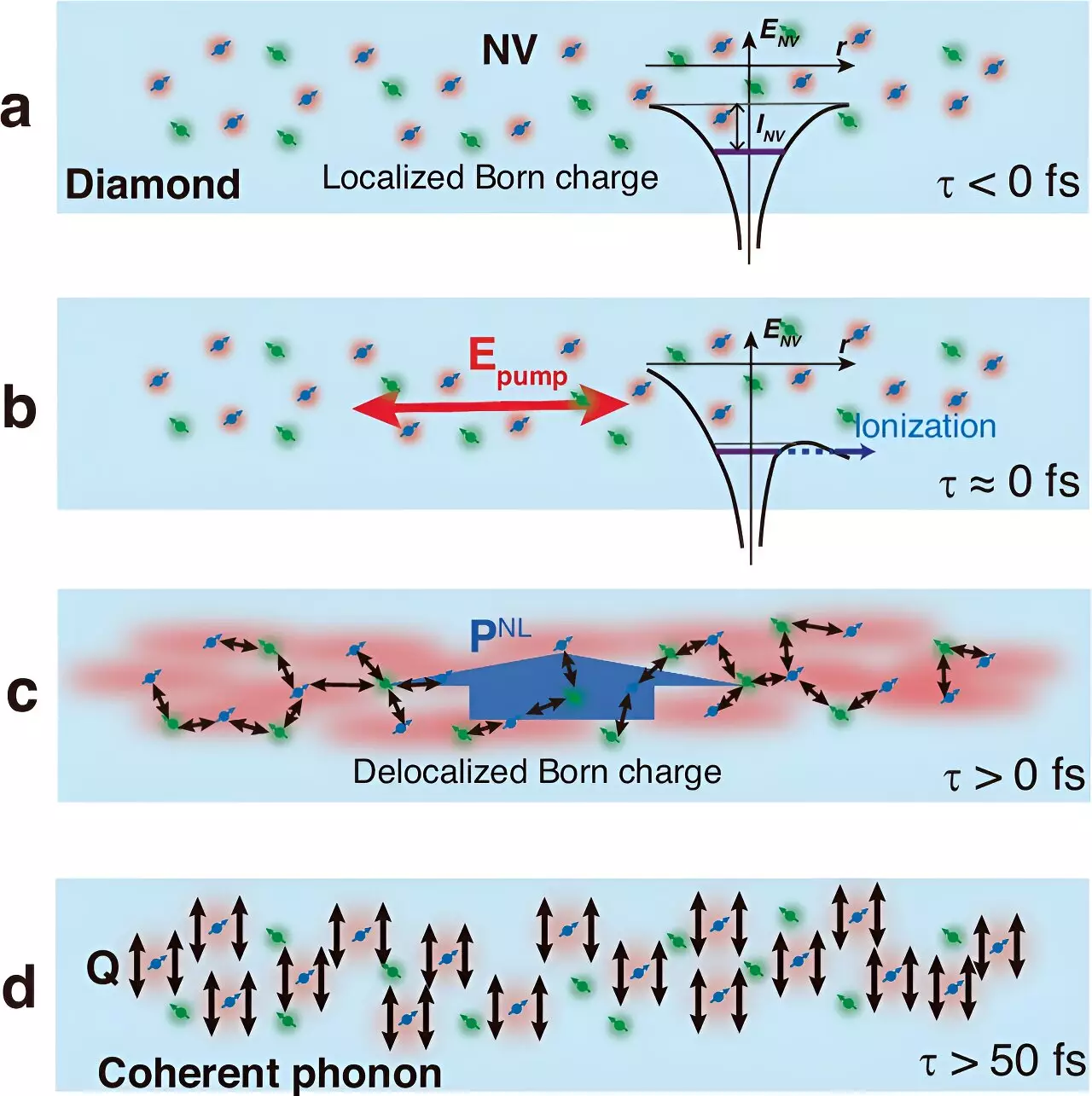Recent advancements in the field of quantum sensing have revealed intriguing developments surrounding the behavior of polaron quasiparticles, particularly within the context of diamond crystals. A research team from the University of Tsukuba made a notable breakthrough in understanding how these quasiparticles cooperate through interactions between electrons and lattice vibrations at color centers in diamonds. This revelation not only adds to the scientific community’s knowledge of condensed matter physics but also opens doors for innovative applications in quantum technology.
The central focus of the study involved the nitrogen-vacancy (NV) centers in diamond crystals. Formed by the substitution of a nitrogen atom for a carbon atom alongside a vacant lattice site, these NV centers play a pivotal role in determining the optical properties of diamonds. More importantly, they exhibit an extraordinary response to environmental changes, showing variations in their quantum state as influenced by temperature fluctuations and magnetic fields. This sensitivity positions NV centers as promising candidates for developing high-resolution sensors, with implications for both scientific research and practical applications.
One of the prevailing challenges in the field has been the limited understanding of the interactions between electrons and the lattice vibrations that manifest when the structure of the diamond is distorted. To explore this phenomenon, the researchers employed a novel approach involving ultrathin nanosheets containing a controlled density of NV centers, precisely placed near the surfaces of high-purity diamonds. By subjecting these nanosheets to ultrashort laser pulses, the team could meticulously analyze the ensuing reflectance changes, thus gaining insights into the vibrational dynamics of the lattice.
Significant Findings from Nanosheet Experiments
The experimental results were compelling. The researchers observed that the amplitude of the lattice vibrations intensified substantially—by approximately 13 times—relative to the inherently low density of NV centers in the nanosheets. This unexpected amplification suggests a degree of cooperative behavior among polaron quasiparticles, which had not been thoroughly studied in such contexts before. Furthermore, computational models indicated that the charge state of the NV centers was biased toward positive and negative distributions, revealing the complexities of their charge dynamics.
The Emergence of Fröhlich Polarons
One of the more revolutionary aspects of the findings is the detection of Fröhlich polarons, a concept theorized nearly 70 years ago but previously assumed nonexistent in diamond matrices. This notion of polarons, where free carriers exist alongside a cloud of phonons, represents a significant leap in our comprehension of quasiparticle dynamics. By demonstrating the existence of these polarons at NV centers, the research not only challenged long-held beliefs but also paved the way for potentially transformative advancements in quantum sensing technologies that harness these unique properties.
Overall, this project exemplifies the fruitful intersection of theoretical physics and experimental methodology. The implications of the cooperative behavior of polarons mediated by NV centers could usher in a new era of highly sensitive quantum sensors and novel material applications. As further research unfolds, the potential for this technology to impact various fields—including telecommunications, medical imaging, and environmental monitoring—remains a tantalizing prospect worth pursuing.


Leave a Reply